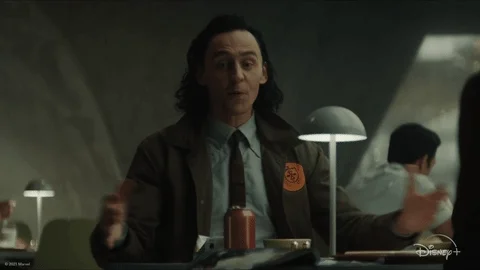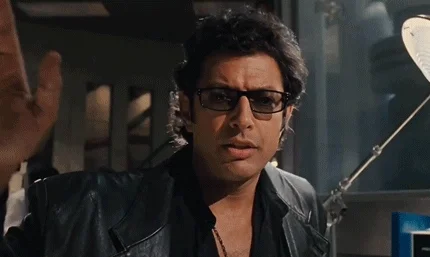Originally published at: The Tasmanian Tiger's been extinct since 1936. Should we bring it back with science? | Boing Boing
…

Short answer, no.
Long answer, I would say the same thing when someone asks “should we bring back the mammoth or the passenger pigeon” I would reply with another question : What would it eat and where ?
In the case of creatures we hunted to extinction I would think the answer would be “same stuff as before?” It’s not like we’re talking about a T-Rex or some other species that’s never coexisted with modern ecosystems.
From an ecological point of view, reintroducing the Thylacine to Tasmania wouldn’t be that different from reintroducing wolves to the parts of North America where they were hunted to extinction generations ago. I personally think it’s pretty cool that we have wolves in Yellowstone again even if area ranchers disagree.

I am a terrible human being, my answer is yes. Not to repopulate the outback, but to see what the creature is actually like.
That said, it is Australian, and while, on the whole, the humans are pleasant, this is one of the few places where everything seems to be deadly.
A short list:
- Spiders- deadly, list of
- Snakes- deadly, list of.
- Snails, Cone snails of Australia
- Fire using bird, “Karrkanj”
- Catapiller of doom, Doratifera vulnerans
- Saltwater crocodiles, Crocodylus porosus
- *…shark bites seem to be more deadly in Australia
- The national symbol of Australia, Kangaroo fatality, see also “Drop Bear” hoax… or is it¹
- Non flying dependents of dinosaurs, Cassowaries
- Box jellyfish, Cubozoans
- The temperature,Heatwave fatalities in Australia, 2001–2018
- Russell Crowe, no links because it may be triggering
In short, I am all for seeing extinct animals come back, so we can learn about animals that have gone extinct. I am for some restoration of species, to fill niches that they once filled but were made extinct by humankind.
But given the general tendency of organisms to become deadly in Australia and if this could lead to cloning of Russel Crows or the transplanted species Mel columcille gerard gibson(ione) then I am against it!
Editing for: links, formatting, According to several sources, ¹"Drop Bears" are not real and are a hoax, but that’s exactly what an intelligent deadly species would declare it’s self.
The Hunter 2011, A mercenary is sent by a biotech company to the Tasmanian wilderness on a hunt for the last Tasmanian tiger. Paradox, sad and convincing. Homo sapiens understand science without enough understanding of what nature is. Nature good. Humans bad.
Should we bring it back with science?
Has blood/dark magics worked yet?
No?
THEN, YES USE A SCIENCE!
– a super villain, probably
Here’s a short article, just googled, about the population boom-and-bust of passenger pigeons. I think we can do without these guys.
Short answer is “no”. There are still wolves in North America. It was never hunted down to extinction. For the case you are mentioning, we took other wolves from other parts of North America and reintroduced them there. In a PARK that has an area of close to 9 000 square kilonetres. That is more than 10 % of the total area of the whole island of Tasmania.
In case you did not know, the British almost exterminated the Humans living there, the Palawa.
The habitat, the flora and the fauna where Thylacine thrived is mostly gone, forever. Why don’t we try to continue protecting the Sarcophilus, instead. I thnk that’s better focused energy, don’t you agree? In my province, we can’t even protect the caribou correctly…
But it was hunted to extinction in many parts of North America. So reintroducing wolves to an area in which they had been absent for generations would have the same ecological impact to that area whether the new wolves were cloned or not.
Imagine for the sake of argument that a small population of Thylacines had survived on mainland Australia or another one of its outlying islands after they were hunted to extinction in Tasmania back in the 1930s. In such a scenario, how would reintroducing a breeding population to a protected area of Tasmania be functionally different than reintroducing wolves to a national park in North America?
The real reason we’re having this discussion is because we still haven’t reached any kind of social consensus on the ethics of cloning. Which is, you know, fair enough.
I don’t see it as an either/or question. Restoring the biodiversity of Tasmania’s local fauna might even provide unexpected benefits to the Tasmanian Devil, just as reintroducing wolves had unexpected benefits for the bears in Yellowstone.
But it was hunted to extinction in many parts of North America. So reintroducing wolves to an area in which they had been absent for generations would have the same ecological impact to that area whether the new wolves were cloned or not.
The wolf was not completely wiped out as a species. The Thylacine is not closely related to the Sarcophilus, even though both are marsupials. Sarcophilus is more closely related to Quoils. Bringing back a cloned species from exinction means it will NOT be the same, and will probably be non-viable for reintroduction, as it’s DNA pool is very low (think severe genetic problems). The onca, or snow leopard is experiencing a downward spiral where a lot of the members of the wild population have bad hips (dysplasia). Imagine jumping off a mountain cliff to catch prey with a bad hip… Here is another species where we could try to protect biodiversity. Speaking of cats, why not reintroduce the cougar in Eastern North America?
Imagine for the sake of argument that a small population of Thylacines had survived on mainland Australia or another one of its outlying islands after they were hunted to extinction in Tasmania back in the 1930s. In such a scenario, how would reintroducing a breeding population to a protected area of Tasmania be functionally different than reintroducing wolves to a national park in North America?
But there was not. Yes of course had it happened, I would be all for it. They are reintroducing Sarcophilus in souther Australia as we speak. But the environment of Southern Asutralia as a whole is under severe stress. So the question asked remains : what will it eat and where?
I don’t see it as an either/or question. Restoring the biodiversity of Tasmania’s local fauna might even provide unexpected benefits to the Tasmanian Devil.
Yes, let’s start by restoring biodiversity in Tasmania (flora and fauna), stop encroachment, limit Human development (car & suburb deconstruction) and then one day, when biotech is better, we can work on Thylacines.
Surprisingly googling “introducing cougars” got tame G rated results. ![]()
Oh My Goodness, you have made my day dear sir.
De-extinction is a myth. You’ll never be able to bring back an exact original because it will be missing its original maternal mitochondrial genome – replaced, instead, by the mito genome of its surrogate mother. Plus, it serves as discentive for people to actually take care of still extant species that are on the brink if somehow people are lead to believe we can simply de-extinct them. De-extinction is more about ego than eco.
Willem Dafoe ![]()
Will they eat rabbits?
I tend to have a “why not both” attitude about this. Of course I’d love to see recently extinct species brought back. But yeah species that we STILL HAVE are dying off and we seem to be unable to get it together to protect them. In an ideal world I would hope that science that evolves in the effort to bring species back could help with genetic diversification of endangered species or something like that. But of course the main problem is habitat loss and poaching which are more societal and political problems…
